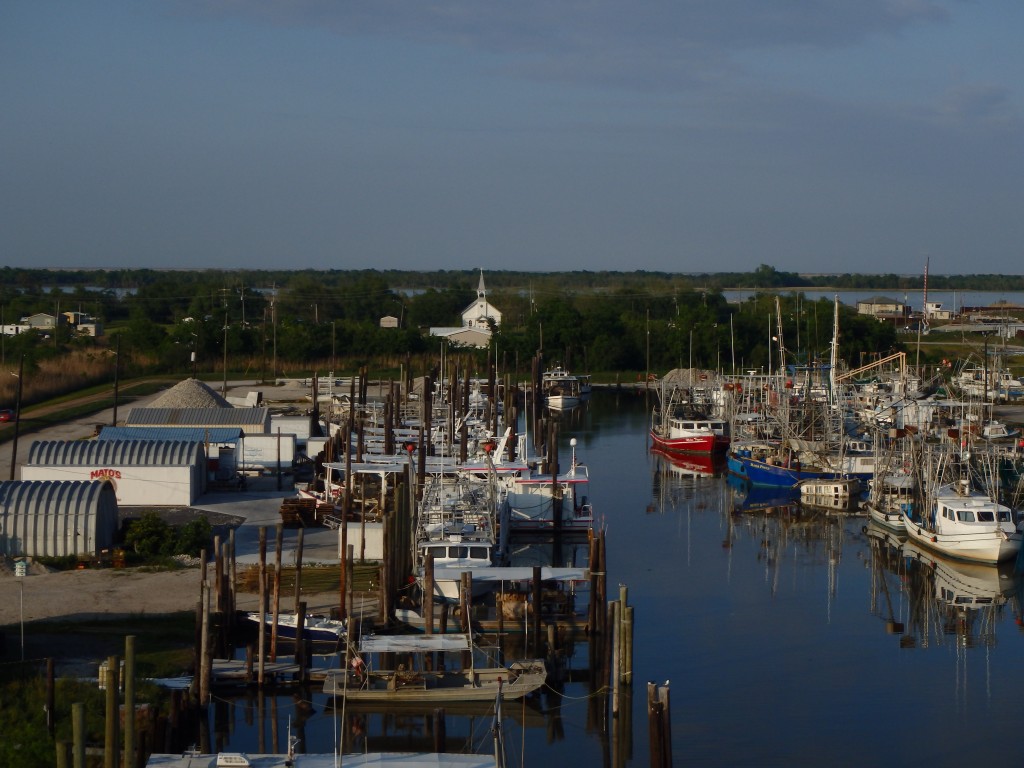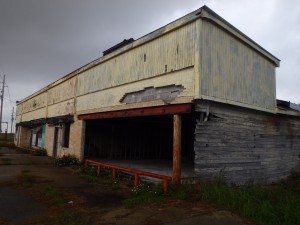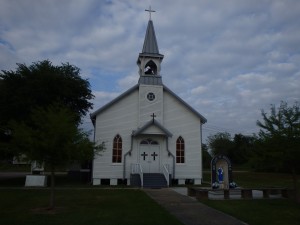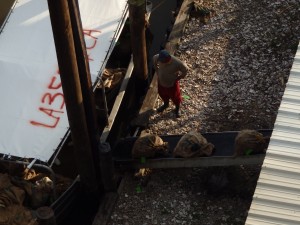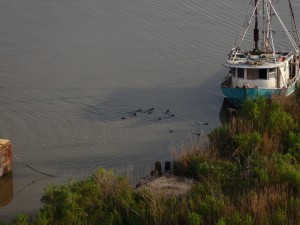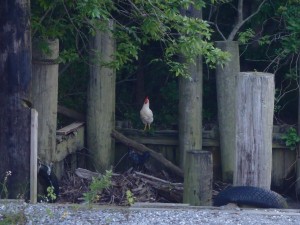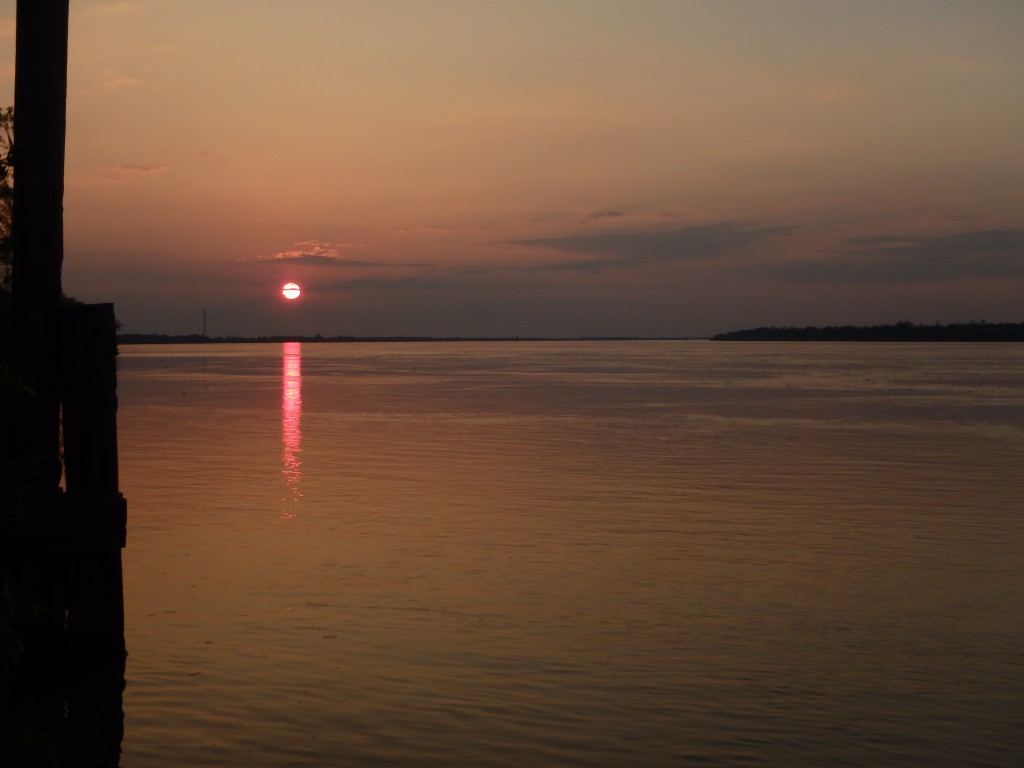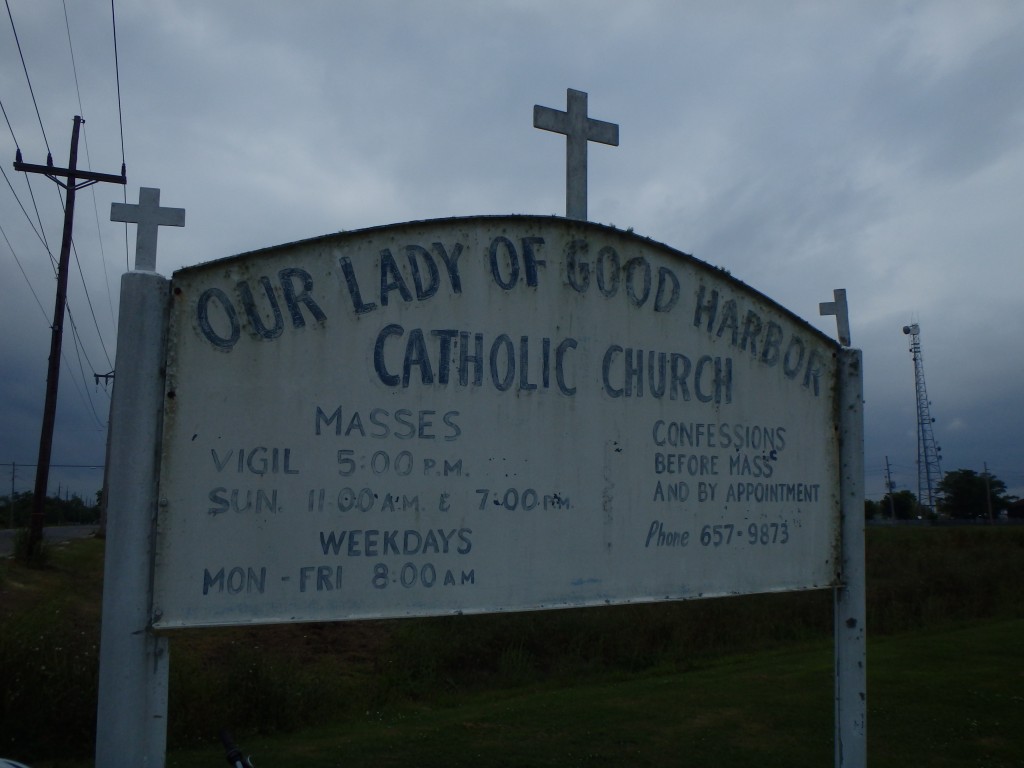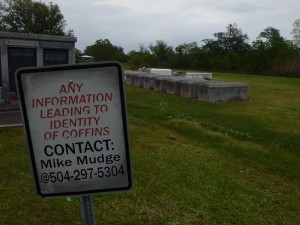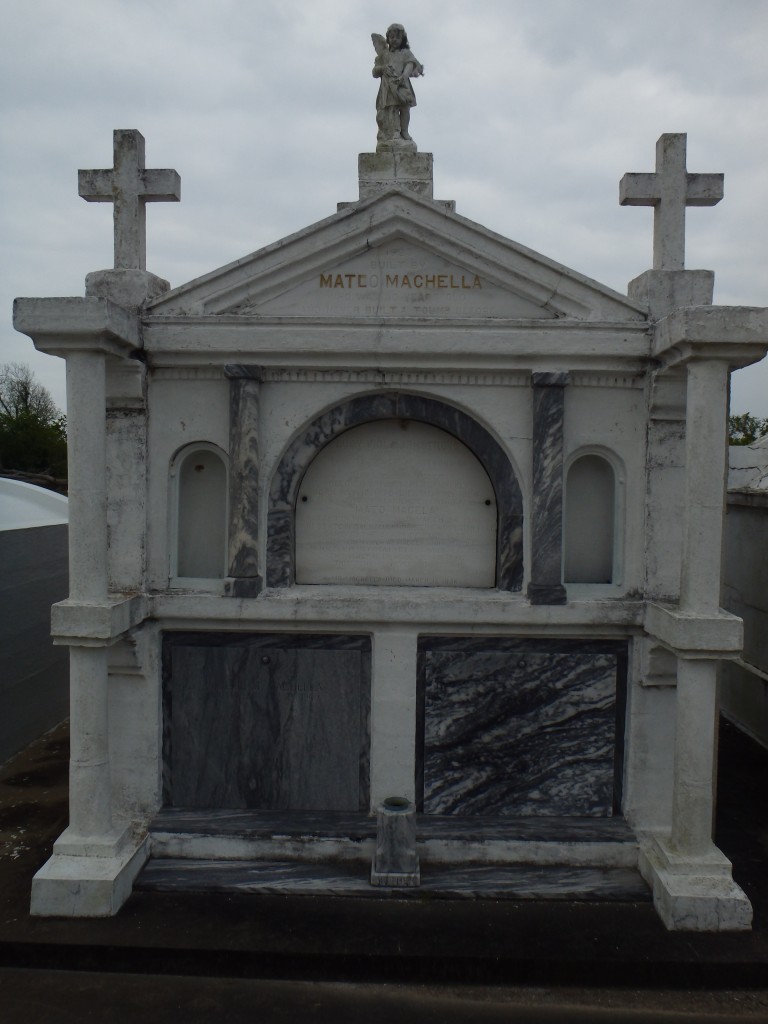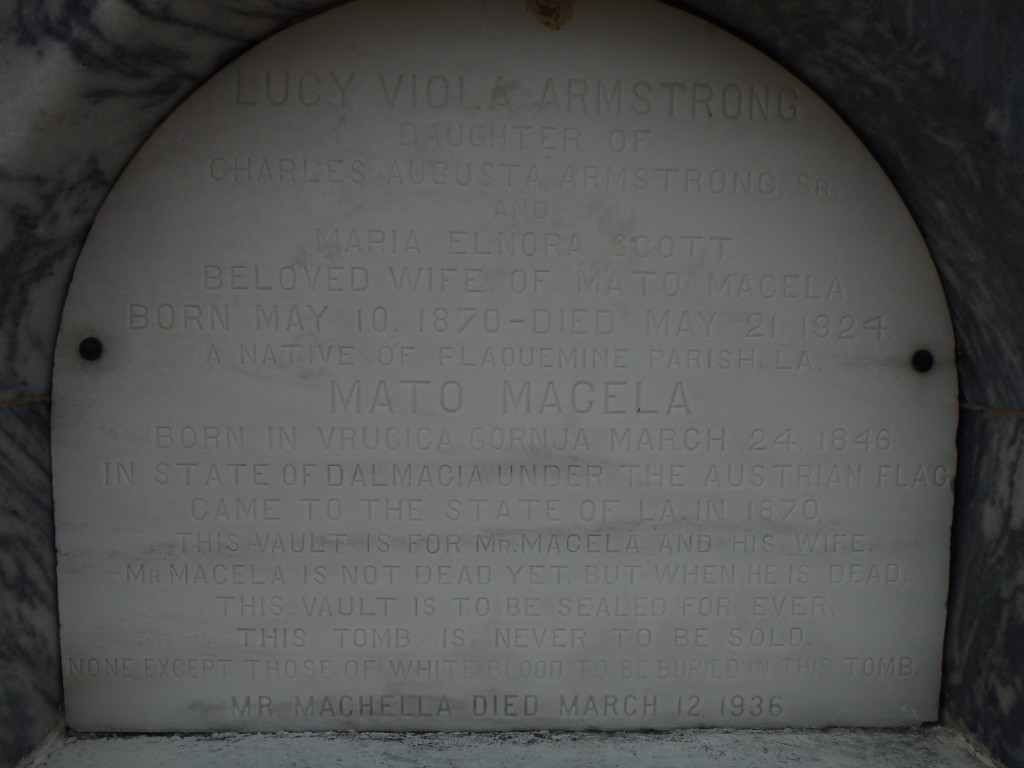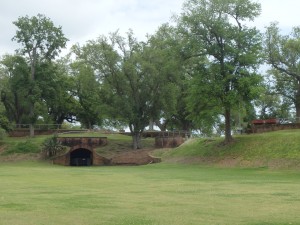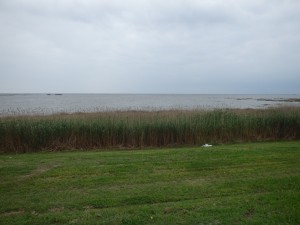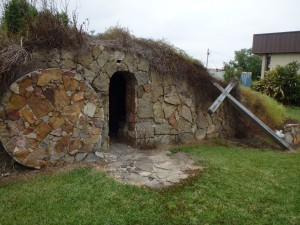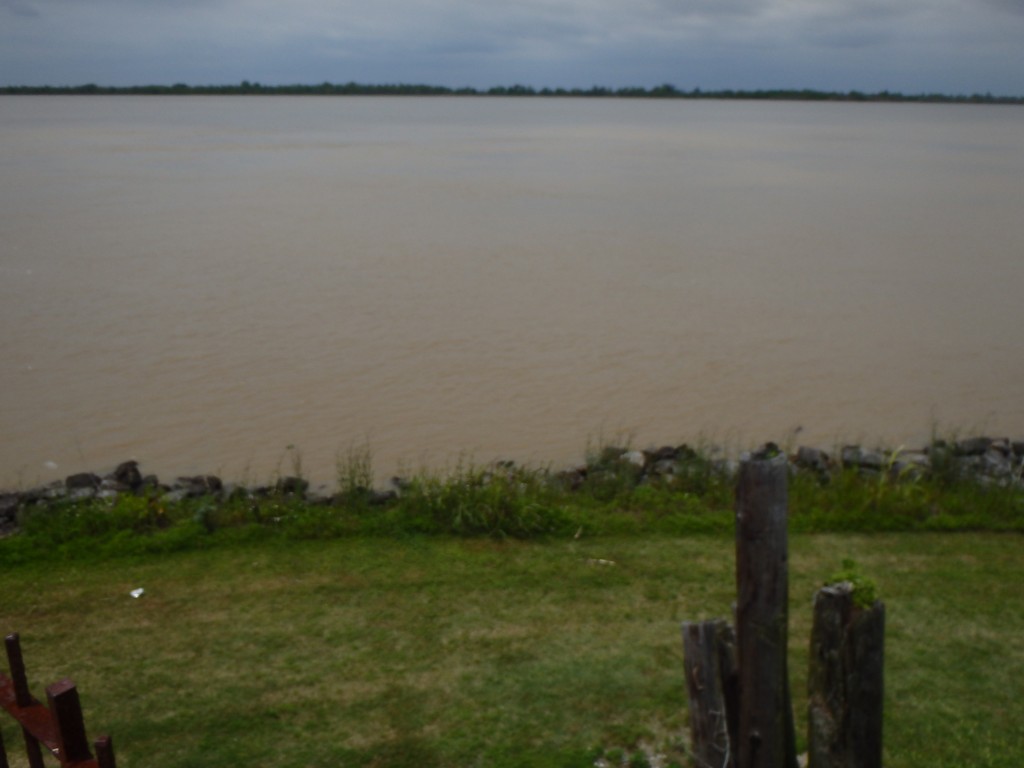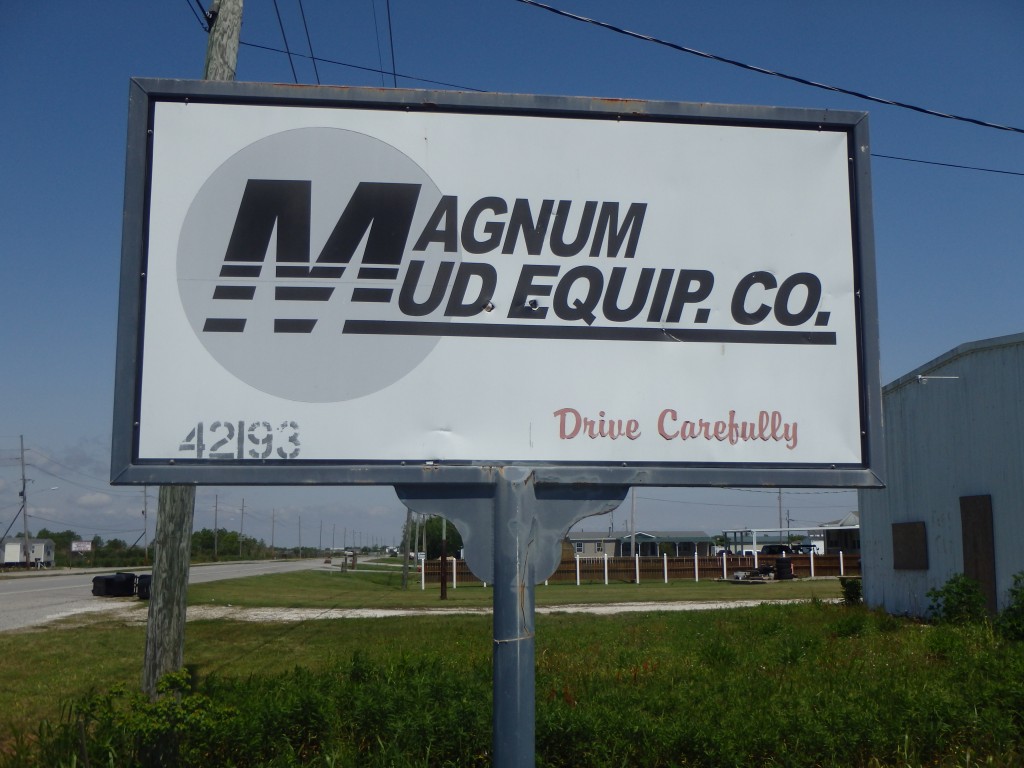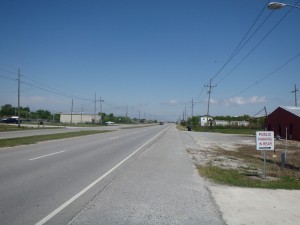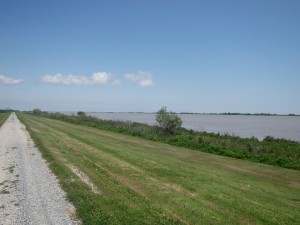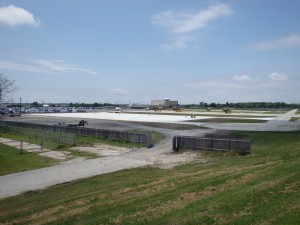I had stopped to camp at mile 34 on my odometer; it ended up being three miles in the dark to get to downtown Port Sulphur, where I was told there was one store open in the evenings that would have food – a gas station. I had a headlight for the bike, but its attachment decided to break as soon as I actually started using it, and so I held it in my hand as I rode. I then finalized my earlier determination not to do much night riding.
The gas station ended up being quite a bit livelier than I could possibly have expected – though I really should not be surprised anymore by the vitality of Louisiana. The gas station had a larger-than-normal grocery section, and a small pizza parlor attached, where frozen pizzas were thrown into a little oven. With the assistance of a ravenous hunger I managed to finish half of one, swearing to the Lord above that in the future, with all due respect to his Provident Mercies, I would rather starve. The pizzas are made by a company called Hunt Brothers; and if they ever start selling pizzas in New York City, we know the Apocalypse is near, for the Abomination of Desolation will be in the sanctuary.
But they did a brisk little business in Port Sulphur, did this pizza company which sponsors NASCAR drivers, and the place was a hub of activity. Strange, lonely-looking men with baseball caps and red eyes and moustaches stood around, waiting for their pizzas and ogling the attractive young woman who threw them in the oven; others sat at their tables, looking off into the distance, finishing, in a room full of men, another meal alone. Groups of Hondurans came through getting groceries. A black man yelled at his little son who had started crying: “I TOLD you it was hot. I TOLD you not to eat it! Now don’t come cryin’ to ME!” A black woman who worked the counter barked at everyone around her: “Now that’s the LAST PIZZA I’ve had enough we’re closin’ down NOW!” “Where’s the mop? Where’s the god-damned mop? I don’t CARE if the place is full, it’s time to mop!”
She looked up at me.
“You’re closing?”
“Damn right we’re closing what does it look like?”
It looked like the place was not closing. “Can I get a pizza?”
“Didn’t I just say we were closing?”
“What about one to go?”
The other woman behind the counter, a young blonde, said, “I’ll make you a pizza. What do you want?” I placed my order and the black woman turned around and started muttering. An older, poorly shaven man who was standing very nearly behind the counter and had the general air of a derelict and a drunk, smiled. The black woman reached into a refrigerator, opened a beer, and gave it to him. I slunk away from the counter.
“Don’t SIT there I just CLEANED that table,” the black woman said to me. I sat at a different table, but I will say, the place showed no sign of closing whatsoever. In fact, it was just about full.
A young black woman came in. “Gimme a root beer.” The black woman behind the counter reached for a cup to fill the order. “No, a BIG ONE. Hey, fill the ice to the top! Gotta be ALL the way to the top!” When there was a pause, she barked, “I don’t wanna cup of ice I wanna ROOT BEER. Hey, all the way to the top, Bee! Yeah. No, wait til there’s no more foam. Fill it up. Hey – don’t put that lid on yet! Fill that up!” When the cup was full – and the black woman behind the counter, I will add, complained the entire time about these proceedings: “You’ll get what I say you get! I know when it’s full! God-damn, bitch!” – as I say, when the cup was full and capped the customer said, “Now gimme two straws.” And when she got the two straws, she just burst out laughing, saying, “Ha, she gave me two straws!” turning around to everyone else in the pizza parlor in triumph, showing her two straws.
Then I knew I was getting closer to New Orleans.
When my pizza came out, I asked the blonde woman, “Are you closing? Do I have to take this to go?”
“Naw we’re open for another half-hour.”
“I got the impression you were closing.”
“Naw don’t listen to her she’s just having fun.”
“Is it always this lively here?”
“This? This is slow. Usually it’s a lot brisker than this.”
“You all seem pretty saucy.”
“Yeah, well, we have to be!”
“Are you from around here? You certainly seem at home here.”
“I was born here, but I live in Texas.”
“Why are you here now?”
“This is my vacation. My Dad lives here, I come back for two weeks. I work here because it’s fun. I’m hoping to move back here, I love it around here.”
“You don’t like Texas?”
“No it’s just that I love it here. But you know, my mom is in Texas, we’ll see. Excuse me one sec.” Some young man she knew had showed up, and it seemed he was trying to arrange some kind of date with her. She went to the other end of the counter. After a few moments she came back, smiling.
“You seem like you get plenty of attention,” I said.
“I won’t lie, I like to have a good time. I don’t like to stay at home much.” Another young man came in, and she started talking to him – he was another man she knew.
I ate half my pizza, hopped on my bike, said my goodbyes, and headed back to my tent. It was certainly the most interesting meal I had had in a gas station.
